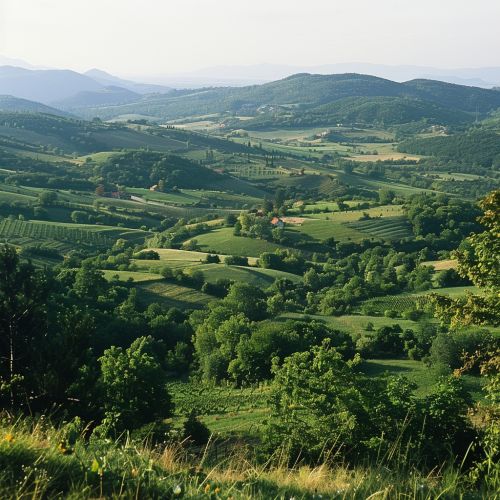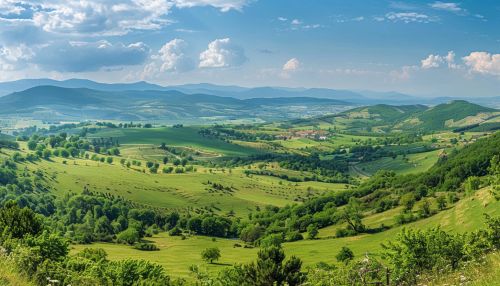Serbia
Geography
Serbia is a country located in Southeast Europe, on the Balkan Peninsula. It is landlocked and borders eight countries: Hungary to the north, Romania and Bulgaria to the east, North Macedonia and Kosovo to the south, and Croatia, Bosnia and Herzegovina, and Montenegro to the west. The country's total area is approximately 88,361 square kilometers.


Serbia's terrain varies greatly, with fertile plains in the north, limestone ranges and basins in the east, and ancient mountains and hills in the southeast. The country's highest peak, Midžor, is located in the Balkan Mountains and reaches an elevation of 2,169 meters.
History
The history of Serbia dates back to the Neolithic Age, with the Vinča culture being one of the earliest known civilizations in Europe. The area was later inhabited by the Illyrians, followed by the Celts and then the Romans.
In the Middle Ages, Serbia was a powerful kingdom that played a significant role in the Balkan Peninsula's political and cultural life. The country reached its peak during the reign of Tsar Stefan Dušan in the 14th century, when it became one of the largest states in Europe.
The Ottoman Empire conquered Serbia in the late 14th century, and it remained under Ottoman rule for nearly four centuries. The Serbian Revolution in the early 19th century led to the establishment of the modern Serbian state.
Serbia was one of the six republics that made up the Socialist Federal Republic of Yugoslavia from 1945 until 1992. The country went through a period of political and economic crisis in the 1990s, including the Yugoslav Wars. In 2006, Montenegro declared independence from the state union with Serbia, marking the final dissolution of what was left of the former Yugoslavia.
Politics
Serbia is a parliamentary republic. The executive branch is headed by the Prime Minister, while the President is the head of state. The legislative power is vested in the National Assembly, which is unicameral and consists of 250 members.
The country's political scene is diverse, with numerous political parties representing a wide range of ideologies. Serbia has been on the path of EU integration since the early 2000s and officially became a candidate for EU membership in 2012.
Economy
Serbia has a mixed economy, with a dominant service sector, followed by the industrial sector and agriculture. The country is rich in mineral resources, including oil, gas, coal, iron ore, copper, zinc, and lead.
The automotive industry is one of the most important sectors in Serbia's economy, with Fiat Chrysler Automobiles being a significant employer in the country. Other key industries include food processing, pharmaceuticals, and information technology.
Serbia's economy has been growing steadily in recent years, with a focus on attracting foreign investments and implementing structural reforms.
Culture
Serbian culture is diverse and has been influenced by its geographical location and history. The country's cultural heritage includes numerous monasteries and churches, some of which are listed as UNESCO World Heritage Sites.
Serbian literature has a long tradition, with notable authors such as Danilo Kiš, Miloš Crnjanski, and the Nobel laureate Ivo Andrić. The country also has a vibrant music scene, ranging from traditional folk music to modern pop and rock.
Serbia is known for its sporting culture, with successful athletes in sports such as tennis, basketball, and water polo. The country regularly hosts international sporting events, including the Belgrade Marathon and the EuroBasket tournament.
